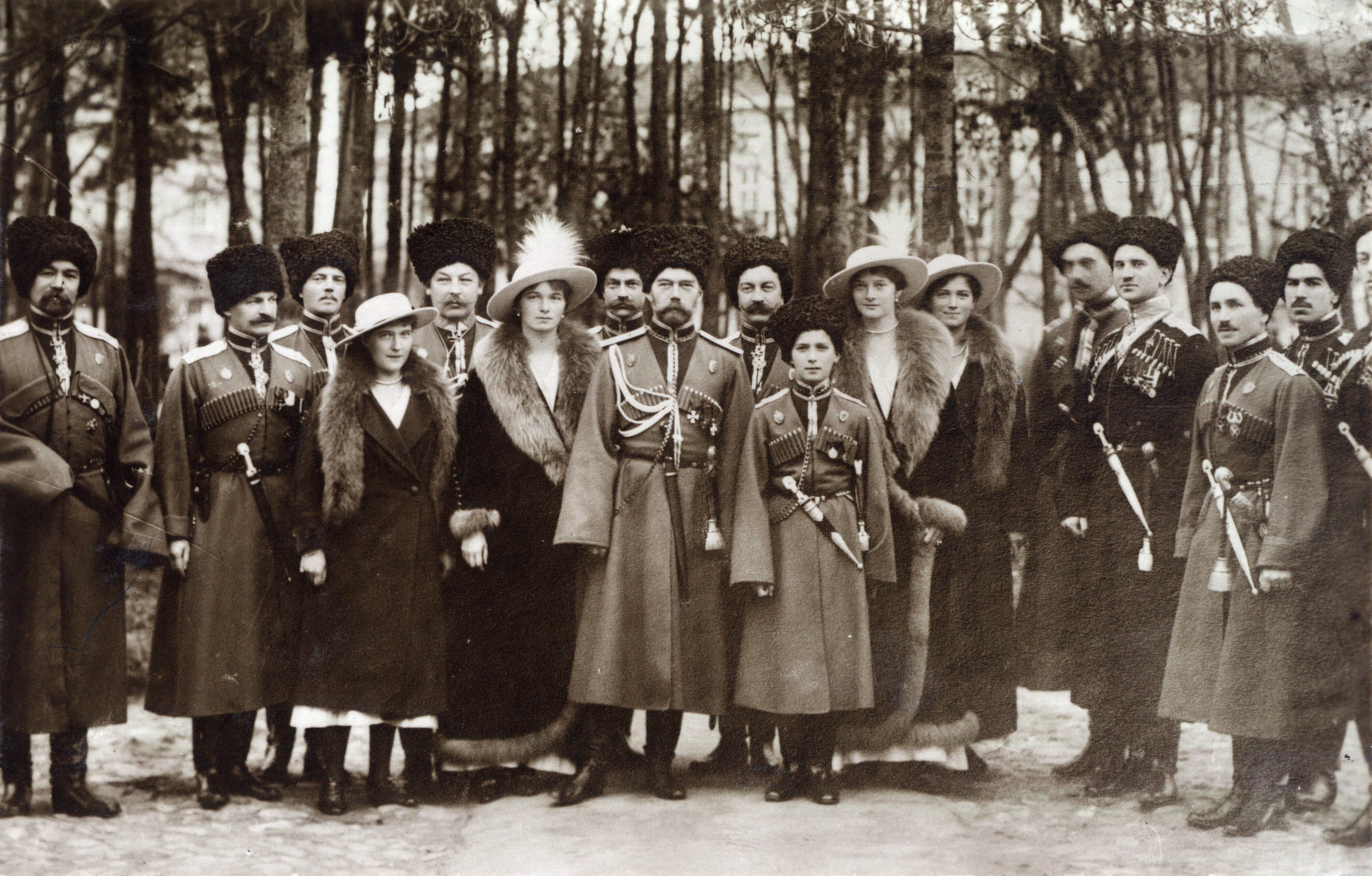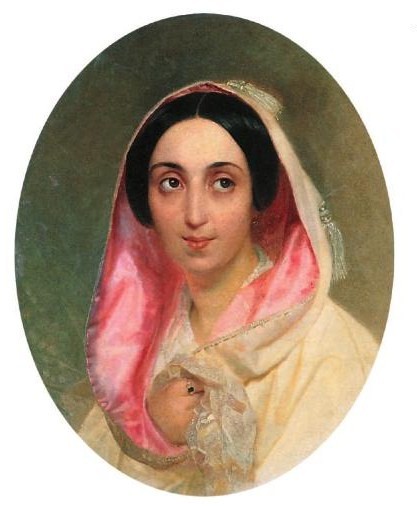|
His Majesty's Own Cossack Escort
His Majesty's Own Cossack Escort (Russian: Собственный Его Императорского Величества Конвой, E.И.B.) - was a Russian Imperial Guard formation, created for the Emperor of All Russia. At the Battle of Leipzig in the Napoleonic Wars, soldiers from the regiment saved then Emperor Alexander I of Russia from being captured by French forces under Napoleon Bonaparte. The core of the regiment consisted entirely of 200 Terek Cossacks and 200 Kuban Cossacks, with 200 men of each cossack host in service, with the other 200 on military leave at any time. History Originally formed in 1811 during the Napoleonic Wars, the regiment served until shortly after the February Revolution and the overthrow of Nicholas II, at which time it was dissolved. The Barracks of His Own Majesty's Cossack Escort was in Pushkin, St. Petersburg near the imperial residence of Tsarskoye Selo. Commanders * 26.08.1856—30.08.1858 — Flügeladjutant, prince Pyotr Rom ... [...More Info...] [...Related Items...] OR: [Wikipedia] [Google] [Baidu] |
Cavalry
Historically, cavalry (from the French word ''cavalerie'', itself derived from "cheval" meaning "horse") are soldiers or warriors who fight mounted on horseback. Cavalry were the most mobile of the combat arms, operating as light cavalry in the roles of reconnaissance, screening, and skirmishing in many armies, or as heavy cavalry for decisive shock attacks in other armies. An individual soldier in the cavalry is known by a number of designations depending on era and tactics, such as cavalryman, horseman, trooper, cataphract, knight, hussar, uhlan, mamluk, cuirassier, lancer, dragoon, or horse archer. The designation of ''cavalry'' was not usually given to any military forces that used other animals for mounts, such as camels or elephants. Infantry who moved on horseback, but dismounted to fight on foot, were known in the early 17th to the early 18th century as ''dragoons'', a class of mounted infantry which in most armies later evolved into standard cavalry while retain ... [...More Info...] [...Related Items...] OR: [Wikipedia] [Google] [Baidu] |
Kuban Cossacks
Kuban Cossacks (russian: кубанские казаки, ''kubanskiye kаzaki''; uk, кубанські козаки, ''kubanski kozaky''), or Kubanians (russian: кубанцы, ; uk, кубанці, ), are Cossacks who live in the Kuban region of Russia. Most of the Kuban Cossacks are descendants of different major groups of Cossacks who were re-settled to the western Northern Caucasus in the late 18th century (estimated 230,000 to 650,000 initial migrants). The western part of the host ( Taman Peninsula and adjoining region to the northeast) was settled by the Black Sea Cossack Host who were originally the Zaporozhian Cossacks of Ukraine, from 1792. The eastern and southeastern part of the host was previously administered by the Khopyour and Kuban regiments of the Caucasus Line Cossack Host and Don Cossacks, who were re-settled from the Don from 1777. The Kuban Cossack Host (Кубанское казачье войско), the administrative and military unit composed of ... [...More Info...] [...Related Items...] OR: [Wikipedia] [Google] [Baidu] |
Nicholas II And Children With Cossacks Of The Guard
Nicholas is a male given name and a surname. The Eastern Orthodox Church, the Roman Catholic Church, and the Anglican Churches celebrate Saint Nicholas every year on December 6, which is the name day for "Nicholas". In Greece, the name and its derivatives are especially popular in maritime regions, as St. Nicholas is considered the protector saint of seafarers. Origins The name is derived from the Greek name Νικόλαος (''Nikolaos''), understood to mean 'victory of the people', being a compound of νίκη ''nikē'' 'victory' and λαός ''laos'' 'people'.. An ancient paretymology of the latter is that originates from λᾶς ''las'' ( contracted form of λᾶας ''laas'') meaning 'stone' or 'rock', as in Greek mythology, Deucalion and Pyrrha recreated the people after they had vanished in a catastrophic deluge, by throwing stones behind their shoulders while they kept marching on. The name became popular through Saint Nicholas, Bishop of Myra in Lycia, the inspira ... [...More Info...] [...Related Items...] OR: [Wikipedia] [Google] [Baidu] |
Svita
His Imperial Majesty's Retinue, ''His Imperial Majesty's Suite'' (abbr. ''H. I. M. Retinue'', ''H. I. M. Suite''; , e.g. ) was a retinue unit of personal aides to the Russian Emperor, who usually were officers of the Army or the Guards units. The aides to the Tsar were routinely assigned honorary title of ''Adjutant''; it was used in parallel with existing personal military, court or civil rank as defined in the Table of Ranks. Anna of Russia was the first Sovereign who assigned an Adjutant General () as her personal military aide in the rank of ''General-Poruchik'' (, Lieutenant General). Since 1775, Pavel I additionally honored a handful of his Guards officers (in an equivalent of Colonel ranks) with a ''Fliegel Adjutant'' (флигель-адъютант), an equivalent of Aide-de-camp. Nicholas I formally created the Suite in 1827 and introduced a title of Major General Major general (abbreviated MG, maj. gen. and similar) is a military ... [...More Info...] [...Related Items...] OR: [Wikipedia] [Google] [Baidu] |
Pyotr Romanovich Bagration
Prince Pyotr Romanovich Bagration (russian: Пётр Рома́нович Багратио́н, ka, პეტრე რომანის (რევაზის) ძე ბაგრატიონი; 24 September 1818 – 17 January 1876), the son of general Prince Roman Bagration, was a Russian- Georgian statesman, general and scientist who invented the first dry galvanic cell. Biography A descendant of the Georgian royal Bagrationi dynasty, with Georgia already annexed by the Russian Empire at the death of King George XII Bagration of Georgia in 1801, successor of King Erekle II Bagration, (Georgian: ერეკლე II) (7 November 1720 or 7 October 1721 – 11 January 1798) reigning as the king of Kakheti from 1744 to 1762, and of Kartli and Kakheti from 1762 until 1798. Both his father, Roman (Revaz) Bagrationi (1778 — Tiflis, 1834), and uncle, Pyotr Bagration ( Kizlar, Dagestan, 1765 — Battle of Borodino, 1812), were famous Russian Army generals. In 1840, B ... [...More Info...] [...Related Items...] OR: [Wikipedia] [Google] [Baidu] |
Tsarskoye Selo
Tsarskoye Selo ( rus, Ца́рское Село́, p=ˈtsarskəɪ sʲɪˈlo, a=Ru_Tsarskoye_Selo.ogg, "Tsar's Village") was the town containing a former residence of the Russian imperial family and visiting nobility, located south from the center of Saint Petersburg. The residence now forms part of the town of Pushkin. Tsarskoye Selo forms one of the World Heritage Site Saint Petersburg and Related Groups of Monuments. The town bore the name Tsarskoe Selo until 1918, Detskoe Selo ( ru , Детское Село , translation = Children's Village) between in the years 1918–1937, then Pushkin ( ru , Пушкин) from 1937 onwards. History The area of Tsarskoye Selo, once part of Swedish Ingria, first became a Russian royal/imperial residence in the early 18th century as an estate of the Empress-consort Catherine (later Empress-regnant as Catherine I, ), from whom the Catherine Palace takes its name. The Alexander Palace (built from 1792 onwards) originated as the hom ... [...More Info...] [...Related Items...] OR: [Wikipedia] [Google] [Baidu] |
Nicholas II
Nicholas II or Nikolai II Alexandrovich Romanov; spelled in pre-revolutionary script. ( 186817 July 1918), known in the Russian Orthodox Church as Saint Nicholas the Passion-Bearer,. was the last Emperor of Russia, King of Congress Poland and Grand Duke of Finland, ruling from 1 November 1894 until his abdication on 15 March 1917. During his reign, Nicholas gave support to the economic and political reforms promoted by his prime ministers, Sergei Witte and Pyotr Stolypin. He advocated modernization based on foreign loans and close ties with France, but resisted giving the new parliament (the Duma) major roles. Ultimately, progress was undermined by Nicholas's commitment to autocratic rule, strong aristocratic opposition and defeats sustained by the Russian military in the Russo-Japanese War and World War I. By March 1917, public support for Nicholas had collapsed and he was forced to abdicate the throne, thereby ending the Romanov dynasty's 304-year rule of Russia ... [...More Info...] [...Related Items...] OR: [Wikipedia] [Google] [Baidu] |
February Revolution
The February Revolution ( rus, Февра́льская револю́ция, r=Fevral'skaya revolyutsiya, p=fʲɪvˈralʲskəjə rʲɪvɐˈlʲutsɨjə), known in Soviet historiography as the February Bourgeois Democratic Revolution and sometimes as the March Revolution, was the first of two revolutions which took place in Russia in 1917. The main events of the revolution took place in and near Petrograd (present-day Saint Petersburg), the then-capital of Russia, where long-standing discontent with the monarchy erupted into mass protests against food rationing on 23 February Old Style (8 March New Style). Revolutionary activity lasted about eight days, involving mass demonstrations and violent armed clashes with police and gendarmes, the last loyal forces of the Russian monarchy. On 27 February O.S. (12 March N.S.) the forces of the capital's garrison sided with the revolutionaries. Three days later Tsar Nicholas II abdicated, ending Romanov dynastic rule and the Russia ... [...More Info...] [...Related Items...] OR: [Wikipedia] [Google] [Baidu] |
Cossack Host
A Cossack host ( uk, козацьке військо, translit=kozatske viisko; russian: каза́чье во́йско, ''kazachye voysko''), sometimes translated as Cossack army, was an administrative subdivision of Cossacks in the Russian Empire. Earlier the term ''viisko'' ( host) referred to Cossack organizations in their historical territories, most notable being the Zaporozhian Host of Ukrainian Cossacks. Russian Empire Each Cossack host consisted of a certain territory with Cossack settlements that had to provide military regiments for service in the Imperial Russian Army and for border patrol. Usually the hosts were named after the regions of their location. The ''stanitsa'', or village, formed the primary unit of this organization. In the Russian Empire (1721-1917), the Cossacks constituted eleven separate hosts, settled along the frontiers: * the Don Cossack Host * the Kuban Cossack Host * the Terek Cossack Host * the Astrakhan Cossack Host * the Ural Cossac ... [...More Info...] [...Related Items...] OR: [Wikipedia] [Google] [Baidu] |
Terek Cossacks
The Terek Cossack Host (russian: Терское казачье войско, ''Terskoye kazach'ye voysko'') was a Cossack host created in 1577 from free Cossacks who resettled from the Volga to the Terek River. The local aboriginal Terek Cossacks joined this Cossack host later. In 1792 it was included in the Caucasus Line Cossack Host and separated from it again in 1860, with the capital of Vladikavkaz. In 1916 the population of the Host was 255,000 within an area of 1.9 million desyatinas. Early history It is unclear how the first Cossack community appeared on the Terek. One theory is that they were descendants of the Khazar state and of the Tmutarakan Principality, as there are records indicating that Mstislav of Tmutarakan in the Battle of Listveno in 1023 had Cossacks on his side when he destroyed the army of Yaroslav the Wise. This would mean the Slavic peoples of the Caucasus are native to the region having settled there much earlier.) But later Terek Cossacks assimilate ... [...More Info...] [...Related Items...] OR: [Wikipedia] [Google] [Baidu] |
Imperial Guard
An imperial guard or palace guard is a special group of troops (or a member thereof) of an empire, typically closely associated directly with the Emperor or Empress. Usually these troops embody a more elite status than other imperial forces, including the regular armed forces, and maintain special rights, privileges and traditions. Because the head of state often wishes to be protected by the best soldiers available, their numbers and organisation may be expanded to carry out additional tasks. Napoleon's Imperial Guard is an example of this. In heterogeneous polities reliant on a greater degree of coercion to maintain central authority the political reliability and loyalty of the guard is the most important factor in their recruitment. In such cases the ranks of the guard may be filled with on the one hand Royal kinsman and clansman with a stake in the survival of the ruling family, and on the other with members socially and culturally divorced from the general population a ... [...More Info...] [...Related Items...] OR: [Wikipedia] [Google] [Baidu] |




.jpg)

